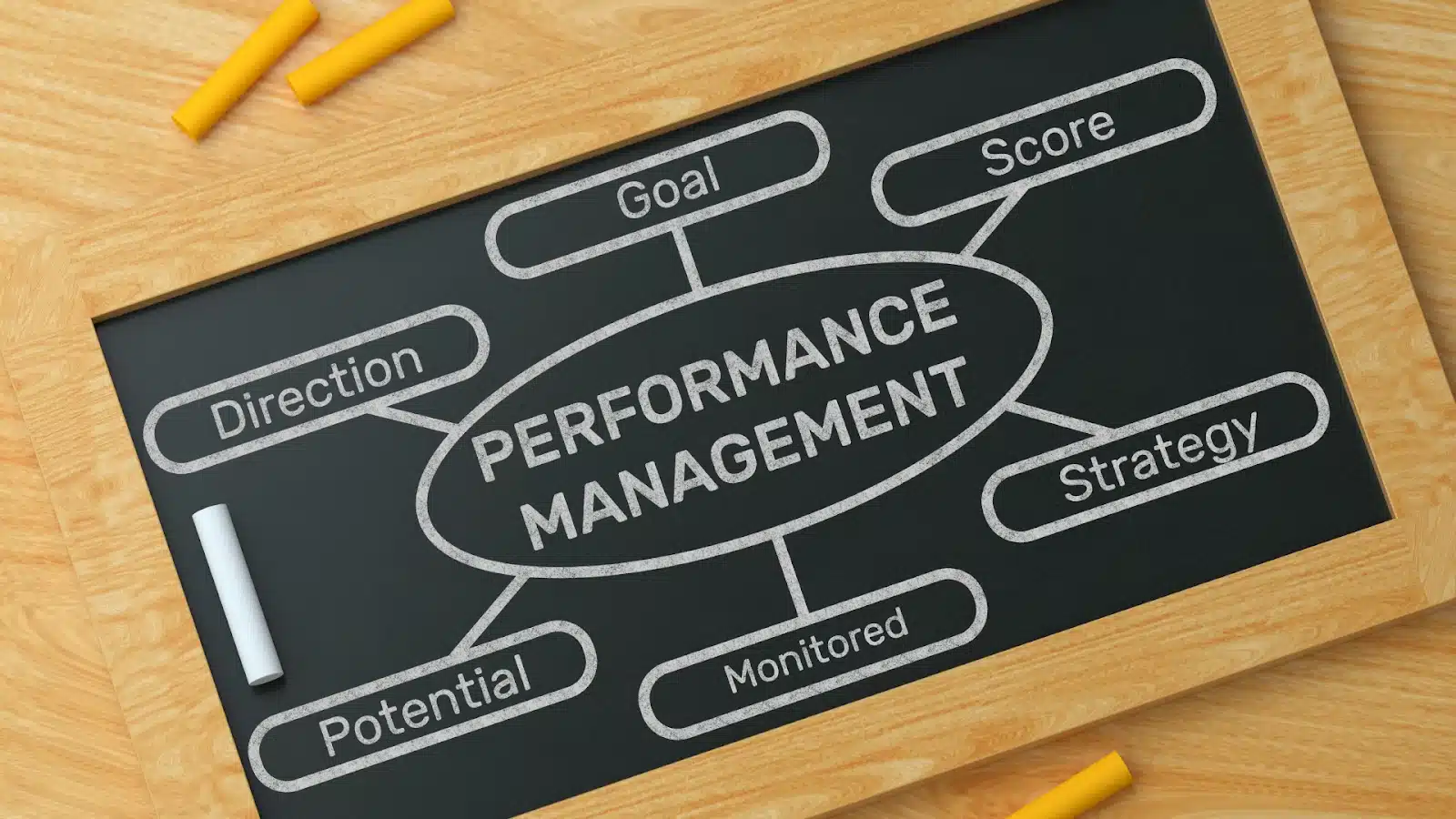
Performance Management Systems That Actually Drive Growth
In today’s fast-paced business environment, organizations are constantly seeking ways to enhance employee performance and drive growth. Performance management systems (PMS) are crucial in this endeavor, as they provide the framework for setting goals, monitoring progress, and facilitating feedback. However, not all performance management systems are created equal. This article explores the characteristics of effective performance management systems that genuinely contribute to organizational growth.
The Importance of Effective Performance Management
Performance management is more than just evaluating employee performance; it is about creating a culture of continuous improvement and engagement. An effective PMS aligns individual goals with organizational objectives, ensuring that every employee understands their role in the bigger picture. This alignment fosters motivation and accountability, leading to enhanced productivity and overall business success. By prioritizing performance management, organizations can cultivate a workforce that is not only skilled but also deeply invested in the company’s mission and vision.
Aligning Goals with Business Objectives
One of the primary functions of a performance management system is to align individual employee goals with the broader objectives of the organization. This alignment is crucial because it helps employees see how their contributions directly impact the company’s success. When employees understand their role in achieving organizational goals, they are more likely to be engaged and motivated. This connection can be particularly powerful in industries where teamwork is essential, as it encourages collaboration and a shared sense of purpose among team members.
For instance, a sales manager at a tech company may set personal targets that align with the company’s growth objectives. By doing so, the sales manager can focus their efforts on activities that will drive the company forward, ultimately leading to higher performance and growth. Additionally, when organizations celebrate milestones achieved through these aligned goals, it reinforces the importance of each employee’s contributions and strengthens their commitment to the company’s vision.
Continuous Feedback and Development
Another key aspect of effective performance management is the provision of continuous feedback. Traditional performance reviews, often conducted annually, can be ineffective and demotivating. Instead, a dynamic PMS encourages regular check-ins and feedback sessions, allowing employees to adjust their performance in real-time. This ongoing dialogue not only aids in skill development but also helps in building trust between employees and management, fostering a more cohesive work environment.
This approach not only helps in identifying areas for improvement but also fosters a culture of open communication. Employees feel valued when they receive constructive feedback and recognition for their efforts, which can significantly boost morale and productivity. Moreover, integrating opportunities for professional development into the performance management process can empower employees to take ownership of their growth. By offering training programs, mentorship, and resources tailored to individual needs, organizations can ensure that their workforce is not only equipped to meet current challenges but is also prepared for future opportunities and advancements in their careers.
Key Features of Growth-Driven Performance Management Systems
To drive growth, performance management systems must possess certain features that enhance their effectiveness. These features enable organizations to create a more engaging and productive work environment.
AI-Powered Insights
Integrating artificial intelligence into performance management systems can provide valuable insights that drive growth. AI can analyze employee performance data, identify trends, and suggest areas for improvement. By leveraging these insights, managers can make informed decisions about training, development, and resource allocation.
For example, an AI-powered system could highlight a team member who consistently exceeds sales targets, prompting management to explore what strategies they are using and how these can be replicated across the team. Additionally, AI can help in predicting future performance by analyzing historical data and identifying patterns that may not be immediately apparent to human observers. This predictive capability allows organizations to proactively address potential challenges and capitalize on opportunities for growth.
Real-Time Performance Tracking
Real-time performance tracking is essential for a PMS that aims to drive growth. By monitoring performance metrics continuously, organizations can quickly identify issues and address them before they escalate. This proactive approach not only enhances individual performance but also contributes to overall organizational success.
Moreover, real-time tracking fosters accountability among employees. When individuals know their performance is being monitored, they are more likely to stay focused and committed to their goals. This immediacy also allows for timely feedback, which is crucial in maintaining motivation and engagement. Employees can receive instant recognition for their achievements, reinforcing positive behaviors and driving a culture of continuous improvement within the organization.
Integration with Existing Tools
For a performance management system to be effective, it must seamlessly integrate with the tools and platforms already in use within the organization. This integration allows for a smoother transition and ensures that employees can easily access the resources they need to succeed.
For instance, a PMS that integrates with CRM systems can provide sales teams with insights into their performance relative to customer interactions. This connection can drive better engagement and ultimately lead to higher conversion rates. Furthermore, integration with project management tools can help track team progress on specific initiatives, allowing for a holistic view of performance across various projects. Such comprehensive visibility not only aids in identifying high performers but also highlights areas where additional support or training may be necessary, ensuring that all team members are equipped to contribute effectively to the organization’s goals.
Creating an Engaging Presentation Experience
In the context of performance management, presentations play a vital role in communicating goals, expectations, and feedback. However, traditional presentations can often lead to disengagement. To combat this, organizations can adopt innovative presentation tools that enhance audience engagement.
Interactive Presentation Tools
Utilizing interactive presentation tools can transform a one-way communication style into a dynamic, two-way experience. For example, platforms that allow audience members to ask questions via SMS can significantly increase engagement. This method eliminates barriers, encouraging participation from even the most reserved individuals.
By integrating such tools into performance management presentations, organizations can create a more inclusive environment where all voices are heard, leading to richer discussions and more effective outcomes. Furthermore, incorporating live polls and quizzes can provide instant insights into audience understanding and sentiment. This not only makes the presentation more enjoyable but also allows presenters to adjust their content in real-time based on audience feedback, ensuring that the information resonates with everyone present.
Real-Time Q&A Capabilities
Incorporating real-time Q&A capabilities into presentations allows for immediate feedback and clarification. This feature is particularly beneficial during performance reviews or goal-setting sessions, where employees may have questions or concerns that need addressing on the spot.
AI-powered Q&A systems can provide instant answers based on the presentation content, ensuring that no question goes unanswered. This approach not only enhances the presentation experience but also fosters a culture of transparency and open communication. Additionally, by analyzing the types of questions asked, organizations can identify common areas of confusion or interest, allowing them to tailor future presentations to better meet the needs of their audience. This proactive approach not only improves the effectiveness of communication but also demonstrates a commitment to continuous improvement and employee engagement.
Driving Growth Through Continuous Learning
For organizations to thrive, continuous learning must be embedded in the performance management process. A growth-driven PMS encourages employees to pursue professional development opportunities, enhancing their skills and capabilities. This approach not only benefits individual employees but also positions the organization as a leader in its industry, attracting top talent who value growth and development.
Personalized Learning Paths
By leveraging data from performance management systems, organizations can create personalized learning paths tailored to individual employee needs. This customization ensures that employees receive the training and resources necessary to excel in their roles. Furthermore, personalized learning paths can adapt over time, reflecting changes in employee performance, industry trends, and organizational goals.
For instance, if an employee struggles with a particular skill, the system can recommend targeted training programs or resources to help them improve. This personalized approach not only boosts employee performance but also contributes to overall organizational growth. Additionally, by integrating feedback mechanisms, employees can provide input on the effectiveness of their learning experiences, allowing organizations to refine and enhance their training offerings continuously.
Encouraging Knowledge Sharing
Encouraging knowledge sharing among employees can significantly enhance the learning culture within an organization. Performance management systems can facilitate this by providing platforms for employees to share insights, best practices, and lessons learned. These platforms can take various forms, such as internal forums, collaborative projects, or mentorship programs, all designed to promote interaction and engagement among team members.
When employees collaborate and learn from one another, it fosters a sense of community and collective growth. This collaborative environment can lead to innovative solutions and improved performance across the board. Moreover, organizations that prioritize knowledge sharing often see increased employee satisfaction, as individuals feel valued for their contributions and empowered to take an active role in their professional development. By creating a culture that celebrates learning and collaboration, organizations can harness the full potential of their workforce, driving both individual and organizational success.
Measuring Success: Analytics and Reporting
To ensure that performance management systems are driving growth, organizations must implement robust analytics and reporting mechanisms. These tools provide valuable insights into employee performance, engagement levels, and overall effectiveness of the PMS. By leveraging these insights, organizations can create a culture of continuous improvement, where feedback is not only welcomed but actively sought after, fostering an environment where employees feel valued and motivated to excel in their roles.
Data-Driven Decision Making
Analytics enable organizations to make data-driven decisions regarding performance management. By analyzing performance metrics, organizations can identify trends, strengths, and areas for improvement. This information is crucial for refining performance management strategies and ensuring they align with organizational goals. Furthermore, the integration of predictive analytics can help organizations anticipate future performance challenges, allowing them to proactively address potential issues before they escalate.
For example, if data reveals that certain teams consistently outperform others, management can investigate the factors contributing to their success and replicate those practices across the organization. This not only promotes a sense of fairness and transparency but also encourages a collaborative spirit, as employees from different teams can share insights and strategies that lead to enhanced performance across the board.
Tracking Engagement Metrics
Tracking engagement metrics is essential for understanding how well a performance management system is functioning. Metrics such as participation rates in feedback sessions, completion rates of training programs, and overall employee satisfaction can provide insights into the effectiveness of the PMS. In addition to these quantitative measures, qualitative feedback from employees can offer a deeper understanding of their experiences and perceptions, allowing organizations to tailor their performance management strategies more effectively.
By regularly reviewing these metrics, organizations can make necessary adjustments to enhance engagement and drive growth. This proactive approach ensures that the performance management system remains relevant and effective in meeting the needs of both employees and the organization. Moreover, fostering an open dialogue about performance and engagement can empower employees to take ownership of their development, leading to a more invested and committed workforce. By creating a feedback-rich environment, organizations not only improve individual performance but also strengthen team dynamics and overall organizational culture.
The Path to Growth-Driven Performance Management
In conclusion, performance management systems that drive growth are characterized by their ability to align individual goals with organizational objectives, provide continuous feedback, and leverage technology for real-time insights. By adopting innovative presentation tools and fostering a culture of continuous learning, organizations can create an engaging environment that empowers employees to excel.

Moreover, the integration of analytics and reporting mechanisms ensures that organizations can measure success and make informed decisions about their performance management strategies. By prioritizing these elements, organizations can transform their performance management systems into powerful tools for driving growth and achieving long-term success.
To explore how to enhance your performance management strategy, consider starting with a trial of an innovative platform that offers AI-powered insights and seamless integration with your existing tools. Start for FREE today and experience the difference it can make in driving growth within your organization.
Unlock Interactive Growth with PresEngage
Ready to revolutionize your performance management presentations? PresEngage offers the cutting-edge solution you need to turn every presentation into a dynamic, growth-driving conversation. With our AI-powered SMS Q&A platform, you can engage your audience in real-time, ensuring every voice is heard and every question is answered, without any apps or technical hurdles. Perfect for presenters, educators, and business professionals, PresEngage is designed to elevate audience interaction and provide actionable CRM-able data. Start for FREE today and experience the power of effortless connection and conversion with PresEngage.
Present Smarter. Engage Answer Convert Close Remarkably.
Dazzle your audience with Real-Time Q&A powered by your AI Co-Presenter.(Patent Pending)
PresEngage™ makes you look brilliant by connecting with everyone, instantly.
No Credit Card Required. 100% Risk Free.
Frictionless Audience Experience GUARANTEED.






